How to Hide Files and Folders on Mac
Hiding files and folders is a common situation, especially among users of MS Windows computers, and just like any other operating system, OS also allows to create hidden folder Mac, the only difference being, that Apple actually hides these options (ironic for sure,) making it difficult for people to find them.
Computers are a personal item, in them, you stored private and valuable information, some of which you don't want other people snooping, that is why the option to hide files and folders was added to Mac OS, to protect this vital knowledge from falling into the wrong hands.
The purpose of this guide is not only to show you how to hide folders on mac but also how to find the options to do it which as you previously read, are also kept hidden for safety purposes. Before moving on, it is important to note that any files or folders meant to be hidden, we'll have to get the Hidden Attribute enabled beforehand so that the Finder and other Apple apps won't display these files on search results.
Try Wondershare Recoverit to Perform Mac File Recovery
 Security Verified. Over 7,302,189 people have downloaded it.
Security Verified. Over 7,302,189 people have downloaded it.
Part 1. When to Hide Files and Folders on Mac?
The World today is much different than it was ten or fifteen years ago. Data has become a major commodity, and that is why some computer users choose to hide some files and folders, especially if they have to share their Mac computer with a family member or a co-worker.
Mac OS is by default, one of the most secure operating systems out there. Unless you are visiting shady websites, downloading unverified third-party apps, there is a low chance of someone hacking into your computer and stealing valuable personal files.
However difficult remotely hacking your Mac OS is, it doesn't mean that unscrupulous can still gain access to your personal files. The problem becomes increasingly difficult if you use a shared computer with family members or co-workers. Luckily for you, there are certain steps you can take to hide all your personal files and folders from anyone who uses the computer.
Hiding your own personal files and accessing hidden operating system files are two of the main reasons why you need to learn how to hide files in mac and how to unhide them in case you need to.
Part 2. How to Hide Files and Folders on Mac?
Modern versions of Mac OS offer a very convenient way to hide/unhide files and folders on Mac, all that you have to is press a couple of magic buttons, and that is it. This is by far the fastest and most efficient way to add files to a hidden folder or have access to one.
Another good way to hide folders Mac is through Terminal Command, it isn't as fast as using a keyboard shortcut, and it may require you to have some high-level computer knowledge, but it is still just as efficient.
FileVault is a great app that also helps to keep selected files and folders safe from potential intruders. It has become increasingly popular among Mac users in recent years, due to the necessity of protecting personal files from prying eyes. Finally, if all other methods sound too difficult or you, creating a separate user's account is also among the most popular ways to protect sensitive data, especially on shared computers.
User Keyboard Shortcuts
To use this method make sure your Mac OS is beyond the 10.12 version, otherwise, it will not work.
Using this method is incredibly efficient, especially if you have to constantly navigate between hidden and unhidden files.
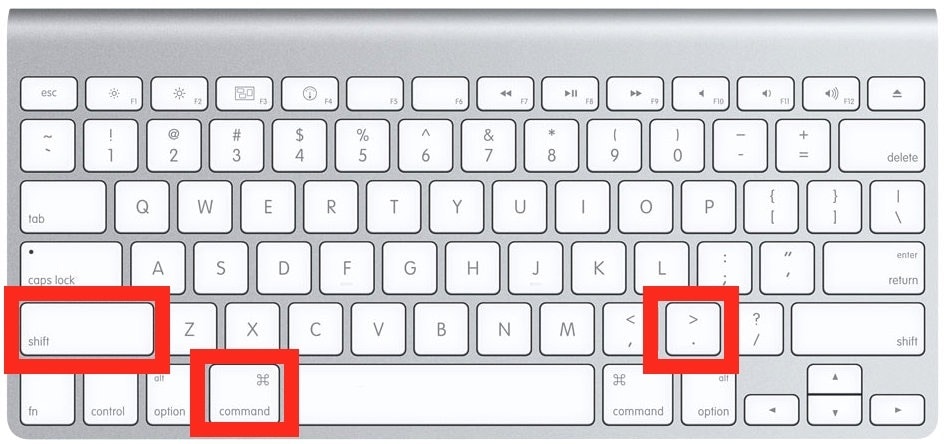
- Go to Finder and open the folder where the hidden files are or where you want to hide the files.
- Press Cmd+Shift+Period (".") and all hidden files will appear, press them again and they will disappear once more.
Use Terminal Command
A good way to hide sensitive files on your computer is through Terminal Command, it is just as simple as the method described above, all you have to do is follow the next instructions to the letter.

- Go to Terminal.
- Type the command "chflags hidden" but do not press enter.

- Drag the file you want to hide and drop it into the Terminal window.
- Now you can press Enter and the "Hidden Flag" will appear.
Enable FileVault to Hide Files
FileVault is by far the best way to keep all the information you choose secret. Not only is the program providing you with high levels of encryptions to protect your files, but it is also going to keep them hidden from prying eyes.
There is no denying FileVault is one of the best Mac OS apps, anyone who's been using a Mac computer for years will tell you that. Another great feature about this app is how simple it is to use, just follow the instructions below.
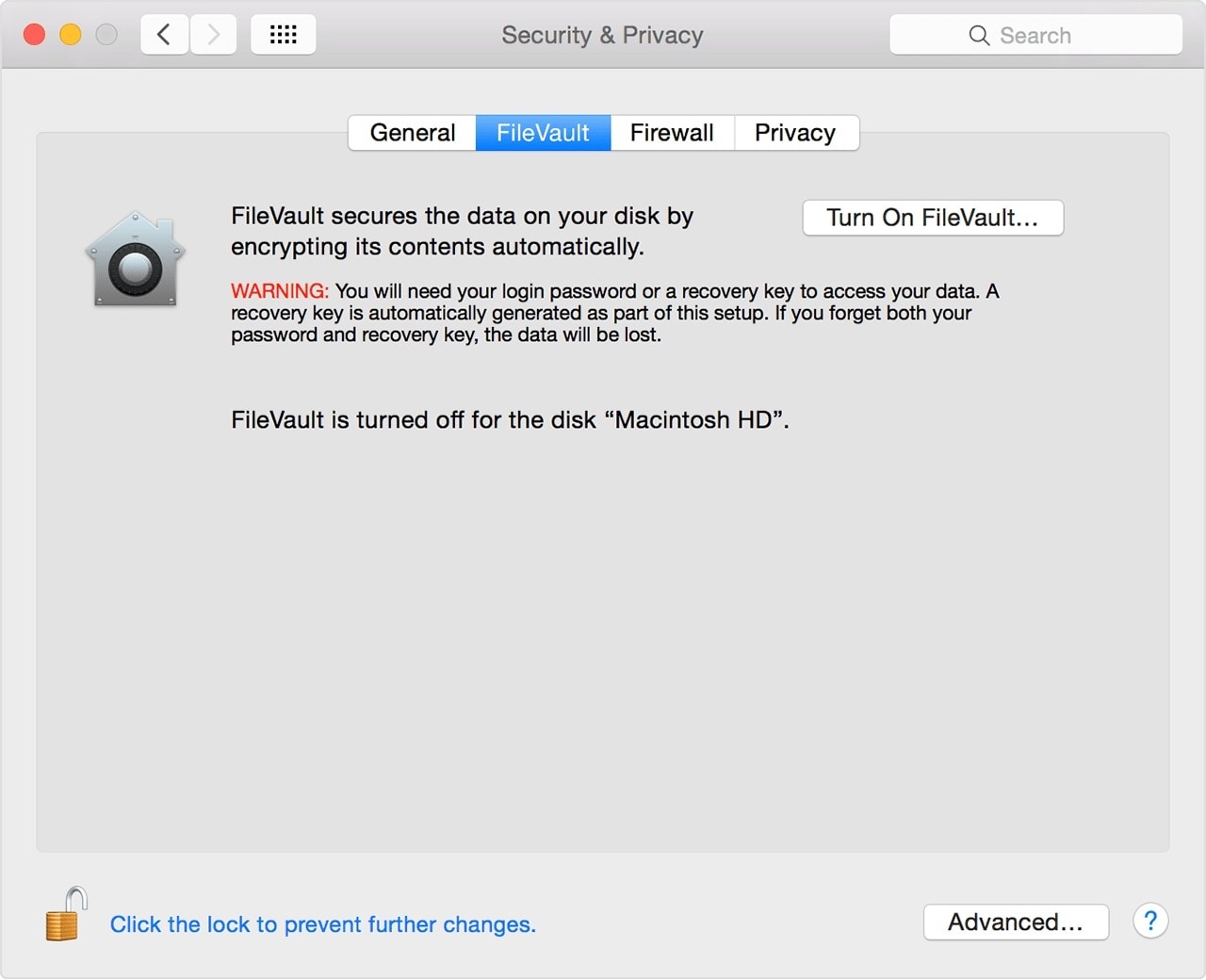
- Go to Apple Menu.
- Click on System Preferences, and then click on "Security & Private."
- Hit the FileVault tab, log in with your credentials, and then Turn FileVault On.
Move Files to Another User Account
While this method isn't the safest, it is still commonly used to hide some files and folders, think of it as a last resort. It is by far the simplest method described in this guide. So, if you don't want to use keyboard shortcuts, you find Terminal a bit confusing, you absolutely refuse to encrypt your hard drive, hiding your files in another User's Account is the right method for you.
Read the next instructions carefully to discover how you can do it.
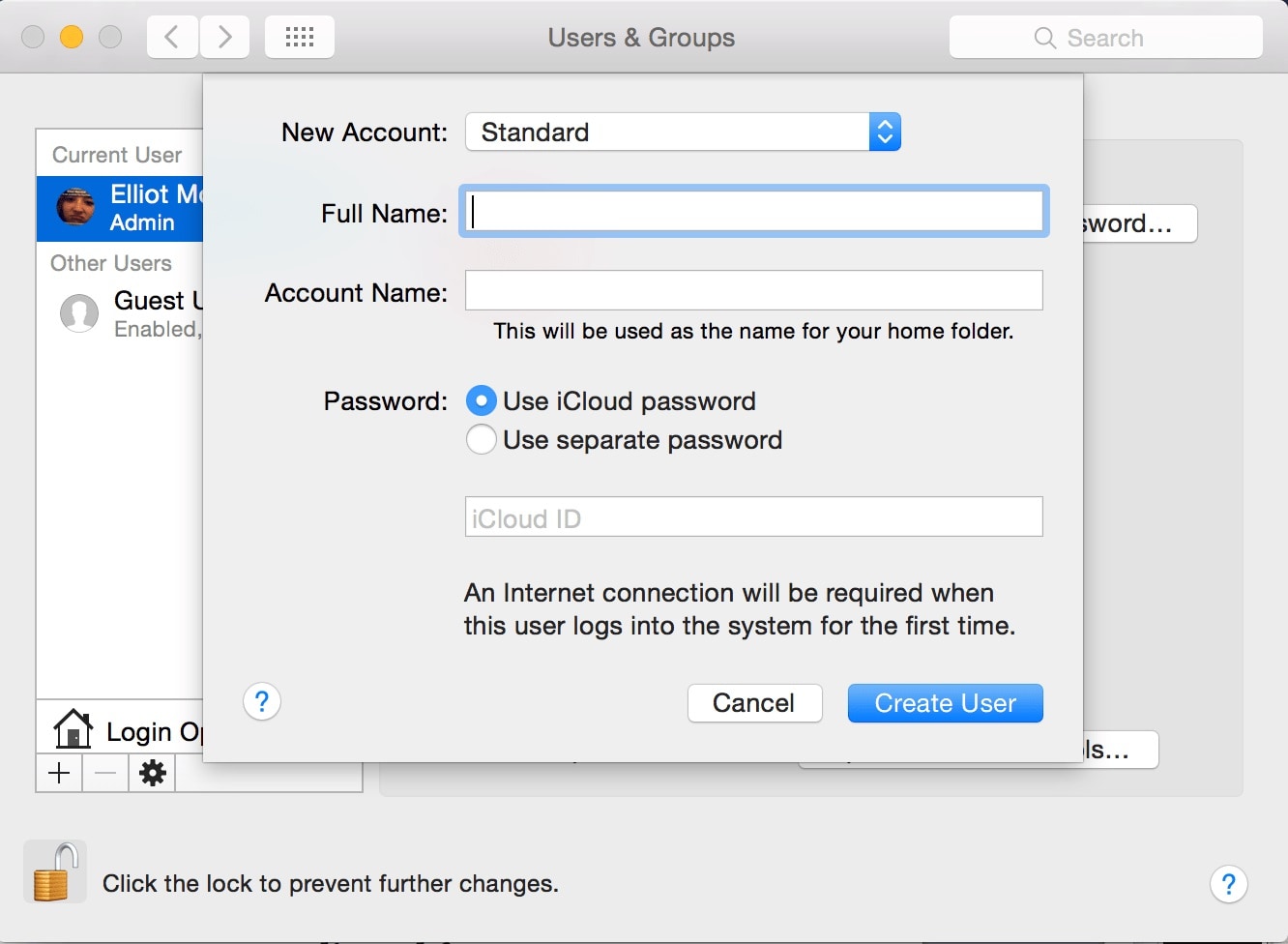
- Go to Apple Menu and click on System Preferences.
- Hit the Users & Groups option, log in with your credentials, and then click on the "+" sign.
- A new create user window drops down, fill in the requirements, and click on "Create User."
All you have to do now is start moving all the files and folders from one user to the other, thus, keeping them hidden from anyone else but you.
Part 3. How to Hide Icons from the Mac Desktop?
If you are a Freelancer working 24/7 on your computer, it is easy to overcrowd your desktop with tons of app icons. With time, you stop using some of these apps, but their icons still linger on your screen, hogging it. You can choose to hide some of these icons to clear up your desktop and make room for new apps.
A thing to keep in mind is that hiding icons from your desktop don't mean they won't still show up on Finder searches. If you believe your desktop needs a facelift, then you'll benefit from this next guide, you'll learn how to hide icons.
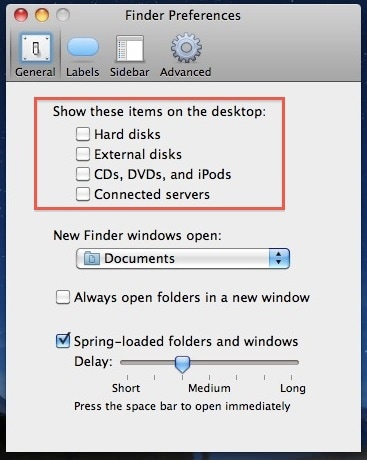
- Click on the Finder menu, and then hit Preferences.
- Go to the General tab.
- Uncheck the boxes next to Hard disks, External disks, CDs, DVDs, and iPods, and Connected servers.
Part 4. How to Unhide Files on Mac?
So far you have learned several methods for hiding files, folders, and icons from your Mac computer. But, after the deed is done, how do you unhide these files? Well, these next few steps will show you how to unhide files on mac.
Use Mac Recoverit Data Recovery Tool
While all the methods listed above are excellent at keeping your most private files hidden, however, at times, your mind may fell victim of a bad case of "I forgot where I put that," and your precious hidden files will remain tucked away, probably never to be found again.
As dramatic as that situation may sound, it does happen from time to time, and when it happens to you, all you need to have at hand is the best Recovery Tool available, Recoverit Mac File Recovery software for Mac.
When you use the program to recover lost data it will also show you hidden files and folders in the results window, to learn how to use the program, follow the steps below.
Step 1: Select the Location
To recover lost files in a partition on Mac, the first you need to do, after running Recoverit, is to select the location where the files used to be, and then click on the Start button.

Step 2: Scan the Location
Recoverit will start the scanning process on the selected location. This is a very thorough search that will take some time to complete.

Step 3: Preview and Recover
Once the scanning process is finished, a list containing all the recoverable files will appear. You can use the preview feature to check them all and pick those you want to save. After you're done, click on the Recover button.

Toggle Keyboard Shortcuts
The first and easiest way to go about it is through a simple keyboard shortcut famously known among seasoned Mac users.
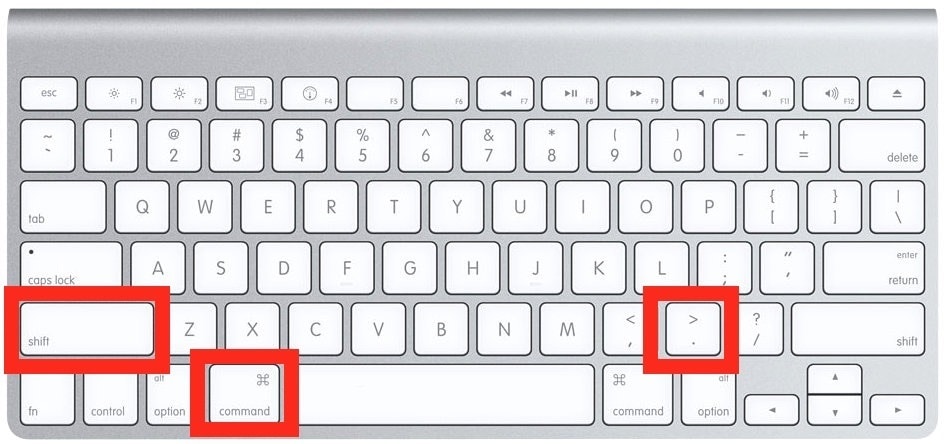
- Through the Finder, the menu opens the folder containing the hidden files.
- Once there, press the keys Command+Shift+Period, (".") and the files will appear.
User Terminal Command
Just as you use Terminal Command to hide files and folders, you can use it to unhide them. The process is exactly the same.
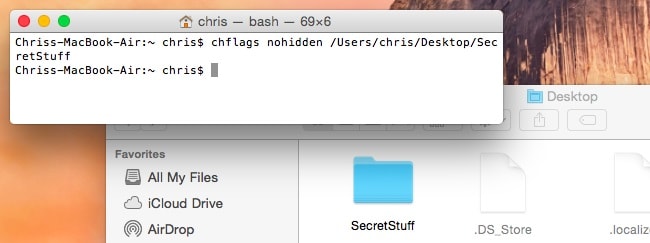
- Through the Finder, the menu accesses a Terminal window.
- Type the next command but do not press Enter, "chflags nohidden".

- Type in the path where you keep the hidden files or folder, and press enter.
As you can see, there are multiple methods to hide files and folders on Mac. Whichever you choose will keep all sensitive information safely tucked away, especially if you share a computer and you are afraid your data may fall in the wrong hands. For whatever reasons you choose to hide it, you know exactly how to do it, and how to unhide files in case you need to.
What's Wrong with Mac
- Recover Your Mac
- Fix Your Mac
- Delete Your Mac
- Learn Mac Hacks














 ChatGPT
ChatGPT
 Perplexity
Perplexity
 Google AI Mode
Google AI Mode
 Grok
Grok
























Sue Wayne
staff Editor